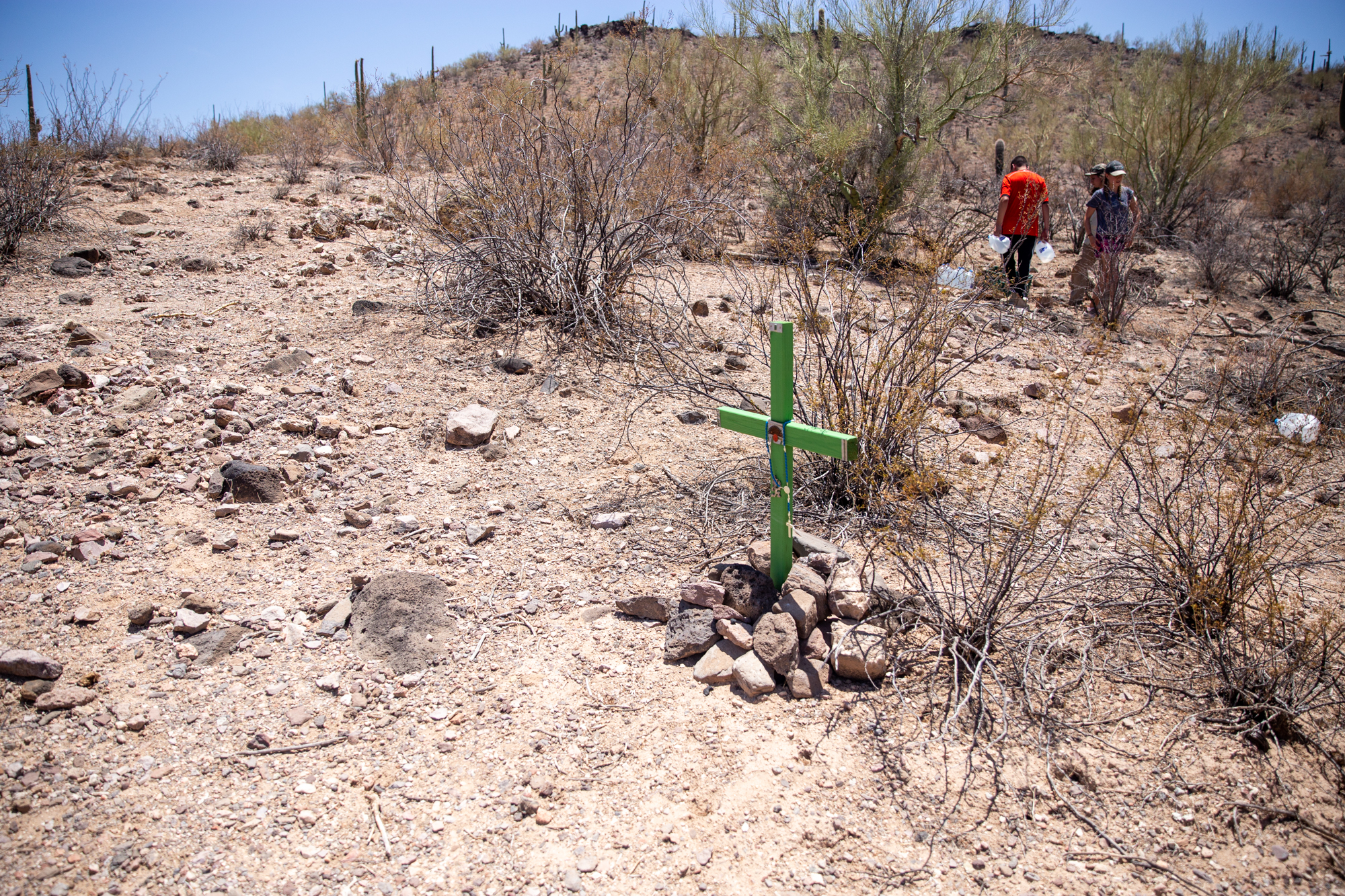- Slug: BC-CNS-Desert Deaths,610 words.
- File photo, graphic available (embed code, thumbnail, caption below).
By Adrienne Washington
Cronkite News
WASHINGTON – Migrant deaths in the Arizona desert spiked in July, when the remains of 42 undocumented individuals were found, the most for that month in more than a decade, advocates and medical officials said.
Heat exposure was listed as the primary cause of death for 22 of those victims, who were found during what the National Weather Service said was the hottest single month on record for southern Arizona.
“Most people have no idea how quickly one can succumb to the desert,” said Brad Jones, a spokesperson for Humane Borders, which tracks migrant deaths in Arizona.
“You know, unless you’ve been there, it’s very difficult to sort of understand just what the heat is like. And, you know, you’re carrying a single bottle of water, you’re not going to make it,” said Jones, who is also a political science professor and affiliate of the Global Migration Center at the University of California, Davis.
Dr. Greg Hess is the chief medical examiner for Pima County. His office regularly handles these cases. He said migrant deaths are “directly proportional to sustained heat.”
“When it gets hot, we expect more remains to come in. And that’s exactly what happened in July,” Hess said.
Humane Borders, which works with families to try to locate missing migrants, also compiles data on migrant deaths based on information provided by Hess and other medical examiners in the region.
Despite the July surge in reported deaths, 2023 does not appear to be on pace to set a record for the year, according to the group’s data. The 109 deaths recorded through the first seven months of 2023 were lower than the number of deaths recorded at the same point of the year in 2020, 2021 and 2022, when total deaths for the entire year approached record levels.
Christian Penichet-Paul is the assistant vice president of policy and advocacy at the National Immigration Forum in Washington, D.C. He says multiple factors are exacerbating the problem that he calls “a very unfortunate part of migration at the U.S.-Mexico border.”
“We’re dealing with more extreme heat conditions in border regions,” Penichet-Paul said. “And then we’re also dealing with policy – an absence of options that to allow people to migrate to the U.S. in safer and more orderly conditions. So those two elements are coming together to really result in higher deaths than before.”
Jones said another complicating factor is the changing demographics of migrants. More are coming in search of asylum, he said, and many are coming from countries outside Latin America and may not be Spanish speakers.
“Just the very act of communicating can be difficult. And so it’s all a very lethal recipe,” he said.
Several nongovernmental organizations try to prevent deaths in the desert by leaving water tanks and conducting searches for missing migrants. But Jason De León, who is the executive director of the Undocumented Migration Project and Colibrí Center for Human Rights, said it is just not enough.
“I’ve done it myself. I’ve been out there, I’ve taken people to the hospital and, you know, been able to give them first aid,” De León said. “There’s still hundreds of people dying a year. And this is still, you know, a horrific problem that, that we don’t see really an end in sight to.”
Penichet-Paul said the risks show the desperation of those trying to make the journey.
“I think people who live in Arizona would understand that if you’re willing to walk for multiple days out in the sun and in such high temperatures, that you’re doing it for a good reason for you and for your family,” he said.
For more stories from Cronkite News, visit cronkitenews.azpbs.org.
^__=
Web links:
_ Humane Borders map: https://humaneborders.info/app/map.asp
_ Humane Borders search: https://humaneborders.org/missing-migrants/
_ Humane Borders: https://humaneborders.org/
_ NWS report: https://www.weather.gov/twc/2023MonthlyClimateReports
_ Colibri Center: https://colibricenter.org/
_ National Immigration Forum: https://immigrationforum.org/
_ Graphic embed code: <div class=”flourish-embed flourish-chart” data-src=”visualisation/14880290″><script src=”https://public.flourish.studio/resources/embed.js”></script></div>
^__=
Volunteers from the group No More Deaths leave water in the desert for migrants in this 2018 file photo. The number of migrants who died in the desert spiked during July’s historic heat wave to the highest level for the month in more than 10 years, advocates said. (File photo by Rebecca Spiess/Cronkite News)
